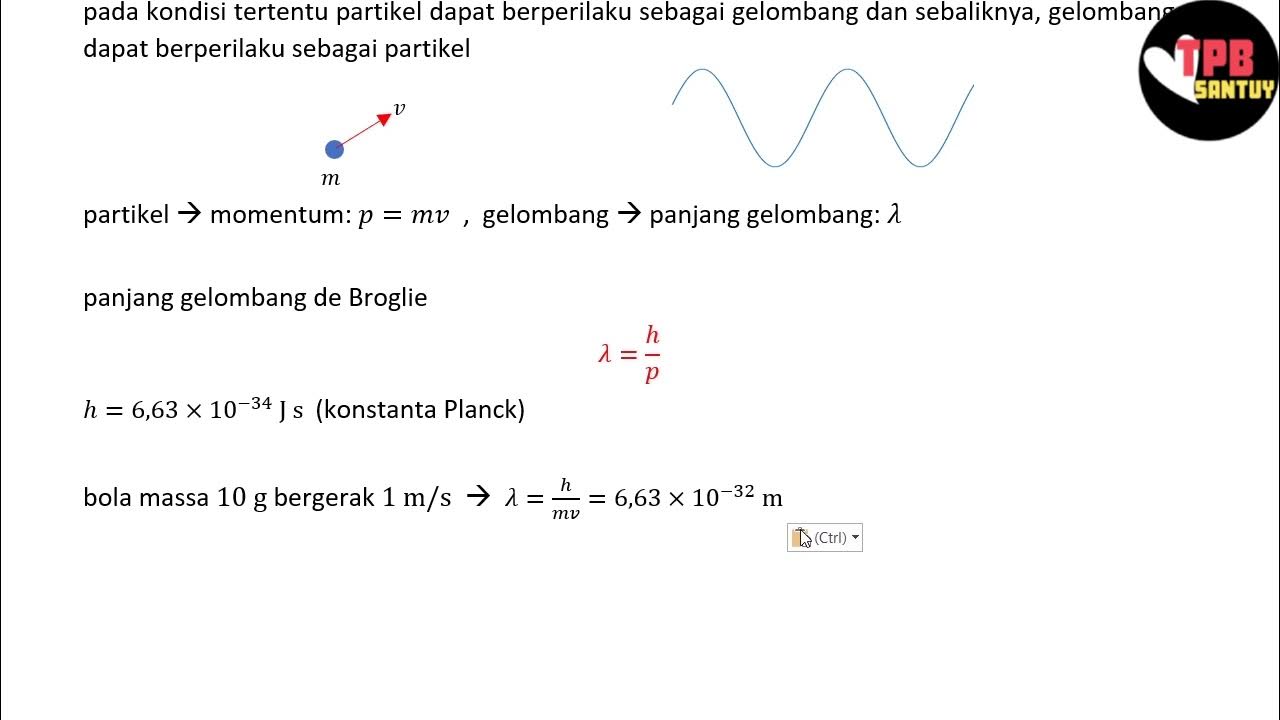Quantum 101 Episode 1: Wave Particle Duality Explained
Summary
TLDRThis video explores the fascinating concept of wave-particle duality, where both light and particles like electrons can behave as waves and particles depending on the context. The double-slit experiment is used to demonstrate how even individual particles create interference patterns, acting like waves. The video also touches on quantum mechanics, highlighting how particles interfere with themselves in the quantum realm. Finally, the speaker connects these principles to their research on fuzzy dark matter, a theory suggesting dark matter has wave-like properties, potentially reshaping our understanding of the universe.
Takeaways
- 😀 Light behaves both as a particle and a wave, demonstrating properties like bouncing off mirrors and bending through prisms.
- 😀 Waves can interfere with each other, as seen in experiments with light and particles.
- 😀 Quantum mechanics reveals that all matter, even large objects, has a wave nature, not just light.
- 😀 Diffraction is a key way to observe the wave nature of light, where it bends around objects and creates patterns.
- 😀 In the double slit experiment, laser light creates an interference pattern due to its wave properties.
- 😀 Particles, such as electrons, also exhibit wave behavior, as seen in the double slit experiment with electron beams.
- 😀 Even when electrons are sent one at a time, the interference pattern still appears, suggesting each electron interferes with itself.
- 😀 Wave-particle duality means that particles have both wave-like and particle-like behaviors, with their wave nature only appearing when not observed.
- 😀 The quantum scale introduces a new way of thinking about interactions in the subatomic world due to the wave-like behavior of particles.
- 😀 Wave-particle duality can have a profound impact on the cosmos, with particles acting like waves potentially affecting the universe's structure.
- 😀 Even extremely small particles, like the one studied in fuzzy dark matter simulations, have wave-like properties that can influence large-scale phenomena like galaxies.
Q & A
What is wave-particle duality?
-Wave-particle duality is the concept that particles, such as light or electrons, can exhibit both wave-like and particle-like behavior depending on how they are observed or measured.
How does light demonstrate wave-like behavior?
-Light behaves like a wave when it bends and spreads out, such as when it passes through a prism, or when it creates interference patterns through diffraction.
What is diffraction, and how does it show the wave nature of light?
-Diffraction is the bending of light around sharp edges or through narrow gaps. This behavior, which creates interference patterns, demonstrates that light has wave-like properties.
How does the double slit experiment show the wave nature of particles?
-In the double slit experiment, laser light passing through two slits creates an interference pattern on the other side, showing that light behaves like a wave. When particles like electrons are used, the same interference pattern appears, indicating that electrons also behave like waves.
What happens when an electron is sent one at a time in the double slit experiment?
-When an electron is sent one at a time, it still creates an interference pattern over time, even though each electron hits the wall at a single point. This suggests that each electron is interfering with itself.
Why do electrons act like waves in the double slit experiment?
-Electrons act like waves because, on a quantum scale, they possess both particle-like and wave-like properties. The wave behavior is evident when electrons create interference patterns.
What does the particle nature of an electron reveal?
-The particle nature of an electron only becomes apparent when it is observed or measured. Before measurement, it behaves as a wave.
How does quantum mechanics change our understanding of particles?
-Quantum mechanics reveals that very small particles, like electrons, do not behave in straightforward ways like larger objects. Their behavior must be understood in terms of both wave and particle properties, which changes how we interact with the subatomic world.
How does wave-particle duality apply to all particles?
-Wave-particle duality applies to all particles, meaning that even macroscopic objects like baseballs have an inherent wave-like nature, although this is not observable at larger scales.
What is fuzzy dark matter, and how is it related to wave-particle duality?
-Fuzzy dark matter is a hypothesis for dark matter, suggesting that it consists of ultra-small particles with wave-like properties. These particles are so small that their wave nature would be observable on a galactic scale, offering a potential explanation for dark matter.
Outlines

Этот раздел доступен только подписчикам платных тарифов. Пожалуйста, перейдите на платный тариф для доступа.
Перейти на платный тарифMindmap

Этот раздел доступен только подписчикам платных тарифов. Пожалуйста, перейдите на платный тариф для доступа.
Перейти на платный тарифKeywords

Этот раздел доступен только подписчикам платных тарифов. Пожалуйста, перейдите на платный тариф для доступа.
Перейти на платный тарифHighlights

Этот раздел доступен только подписчикам платных тарифов. Пожалуйста, перейдите на платный тариф для доступа.
Перейти на платный тарифTranscripts

Этот раздел доступен только подписчикам платных тарифов. Пожалуйста, перейдите на платный тариф для доступа.
Перейти на платный тарифПосмотреть больше похожих видео

Dualisme Gelombang-Partikel | Fenomena Kuantum | Part 1 | Fisika Dasar

The de Broglie Wavelength and Wave Particle Duality - A Level Physics

Davisson-Germer Experiment & Wave-Particle Duality

Knocking Electrons With Light—The Photoelectric Effect

Física Quântica (Dr. Quantum) Fenda Dupla - Dublado PT

The biggest lie about the double slit experiment
5.0 / 5 (0 votes)
